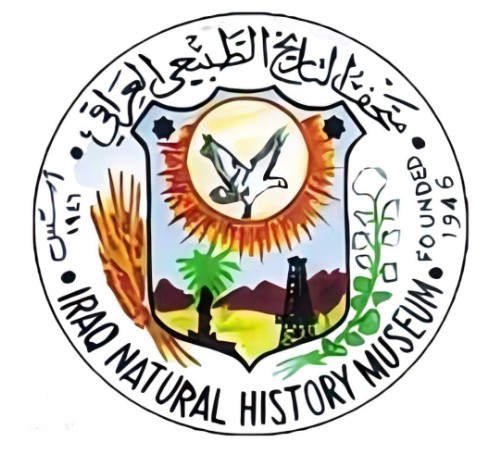ANALYSIS OF MICROFACIES AND DEPOSITIONAL ENVIRONMENT OF LIMESTONE IN YOSONEGORO AREA, GORONTALO PROVINCE, INDONESIA
DOI:
https://doi.org/10.26842/binhm.7.2019.15.4.0443Keywords:
Indonesia, Limboto, Limestone, Microfacies,YosonegoroAbstract
The research location is the northern part of the Basin of Limboto Lake; the focus of the research is the limestone outcrop with 24 meter thickness in Yosonegoro area. The purpose of the study is to find out facies, standard microfacies and depositional environment on Limboto limestone. The research method carried out consisted of three methods namely the measured section, petrographic analysis and biostratigraphy analysis.
The limestone facies in the Yosonegoro area consist of two facies. Then, based on sedimentary structure, composition, color, precipitation texture, terrestrial origin components and the organism content, the two facies can divided into three different microfacies. Paleobathymetry shows a deepening from the middle shelf - upper slope to the upper slope - lower slope due to the sea level rise. Compilation of standard microfacies and paleobathymetry types shows changes in depositional environment from the slope environment to the toe of slope environment. The result of this study will be led researchers to propose the name of the new formation, which is the Limboto Limestone Formation according to specific location and characteristics from the previous formation name of the Clastic Limestone Formation.
Downloads
References
Bachri, S., Partoyo, E., Bawono, S. S., Sukarna, D., Surono and Supandjono, J. B. 1997. Geology of Gorontalo, North Sulawesi. Collection of Research Papers and Mapping of the Center for Geological Research and Development 1996/1997, p 18-30. (Indonesia version).
Bukhsianidze, M., Chagelishvili, R. and Lordkipanidze, D. 2018. Late Miocene vertebrate site of Chachuna Iori valley, Georgia, Southern Caucasus. Bulletin of the Georgian National Academy of Sciences, 12(2): 70-75.
Catuneanu, O., Galloway, W. E., Kendall, C. G. S. C., Miall, A. D., Posmentier, H. W., Strasser, A. and Tucker, M. E. 2011. Sequence stratigraphy: methodology and nomenclature. Newsletters on Stratigraphy, 44(3): 173–245.
Compton, R. R. 1985. Geology in the field. New York, Wiley Press, 416 pp.
Crabtree, S. J., Ehrlig, R. and Prince, C. 1984. Evaluation of strategies for segmentation of blue-dyed pores in thin sections of reservoir rocks. Computer Vision, Graphics and Image Processing, 28: 1-18.
Dickson, J. A. D. 1966. Carbonate identification and genesis revealed by staning. Sedimentary Petrology Journal, 36(2): 491-505.
Dunham, R. J. 1962. Classification of carbonate Rocks according to depositional texture. In: Ham, W. E. (Ed.), Classification of carbonate Rocks: American Association of Petroleum Geologists Memoir, p 108-121.
Embry, A. F. and Klovan, J. E. 1971. A late Devonian reef tract on northeastern Banks Island, Northwest Territories. Bulletin of Canadian Petroleum Geology, 19: 730-781.
Flugel, E. 2010. Microfacies of carbonate rocks: Analysis, interpretation and application. Second edition, Springer-Verlag Berlin Heidelberg, XXIII, 984 pp.
Ghosh, A. K. and Sarkar, S. 2013. Facies analysis and paleoenvironmental interpretation of Piacenzian carbonate deposits from the Guitar Formation of Car Nicobar Island, India. Geoscience Frontiers, (4): 755-764.
Hall, R. and Wilson, M. E. J. 2000. Neogene sutures in eastern Indonesia. Journal of Asian Earth Sciences, 18: 787-814.
Hamilton, W. 1979. Tectonics of the Indonesian region. US Geological Survey professional paper, 1078, 345 pp.
Hutchison, C. S. 1989. Geological evolution of Southeast Asia. Oxford Monographs on Geology and Geophysics no. 13. Oxford: Clarendon Press, xv + 368 pp.
Jones, R. W. 1994. The challenger foraminifera. Oxford University Press, 149 pp.
Katili, J. A. 1970. Large transcurrent faults in Southeast Asia with special reference to Indonesia. International Journal of earth Science, 59(2): 581–600.
Katili, J. A. 1978. Past and present geotectonic position of Sulawesi, Indonesia. Tectonophysics, 45: 289-322.
Nichlos, G. 2009. Sedimentology and stratigraphy. Blackwell Science Ltd., London, 335 pp.
Oladimeji, A., Adeyinka, S. A., Adekeye, O. A., Olusegun, O. and Emmanuel, O. F. 2017. Foraminifera biostratrigraphy and depositional environment of sediment in Sile- Well offshore Dahomey Basin Benin Republic. MAYFEB Journal of Environmental Science, 1: 18-33.
Roozpeykar, A. and Moghaddam, I. M. 2016. Benthic foraminifera as biostratigrpahical and paleoecological indicators: an example from Oligo-Miocene deposits in the SW of Zagros Basin, Iran. Geoscience Frontiers, 7: 125-140.
Sukamto, R., and Simandjuntak, T. O. 1983. Tectonic relationship between geologic provinces of Western Sulawesi, Eastern Sulawesi and Banggai-Sula in the light of sedimentological aspects. Bulletin of the Geological Research and Development Centre, 7: 1-12.
Tipsword, H. L., Setzer, F .M. and Smith, L. F. 1966. Interpretation of depositional environment in gulf coast petroleum exploration from paleoecology and related stratigraphy. Gulf Coast Association of Geological Societies, 16: 119-129.
van Bemmelen, R. W. 1949. The geology of Indonesia: Vol. IA - General geology of Indonesia and adjacent archipelagoes. Government Printing House, The Hague, 372 pp.
Wilson, J. L. 1975. Carbonate facies in geologic history. Springer Verlag, New York, 471p. Available at: https://doi.org/10.1007/978-1-4612-6383-8











